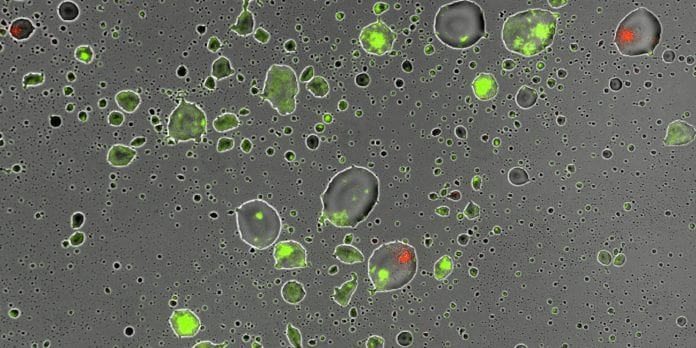
Bacterial Survival In Dry Condition
Microscopic droplets on the surface of leaves help in the survival of bacteria that otherwise may not survive during the dry daytime.
Understanding this bacterial survival strategy for dry conditions may enable researchers to develop tools and practices that support healthy plant microbiomes in agricultural and natural settings.
Scientists have long wondered how bacteria can survive as daytime temperatures and sunlight dry off leaf surfaces. The surface of an average plant leaf consists of about 10 million microbes—a population comparable to that of large cities.
Maor Grinberg co-lead author of the study says that while leaves may appear to be completely dry during the daytime, there is evidence that they are frequently covered by thin liquid films or tiny droplets that are invisible to human life. He is a Ph.D. student at Hebrew University’s Robert H. Smith Faculty of Agriculture, Food, and Environment in Rehovot, Israel.
Bacterial Survival In Dry Condition- How Do They Do It?
In the study, Grinberg, together with co-lead author and Research Scientist Tomer Orevi and team, recreated leaf surface-like conditions in their lab using glass plates that were exposed to various levels of humidity. They then conducted a series of experiments with more than
a dozen different bacteria species in these conditions.The Scientists observed that while these surfaces appeared dry to the naked eye, under a microscope, bacteria cells were safely shielded in minute droplets.
Interestingly, larger droplets formed around aggregates of more than one cell, whereas only tiny droplets were seen around solitary cells. This microscopic wetness is caused by a process called deliquescence. It is a process in which hygroscopic substances, such as aerosols that are prevalent in leaves surface, absorb moisture from the atmosphere and dissolve within the moisture to form the droplets.
Bacterial Survival In Dry Condition- How’s It Helpful?
The scientists found that bacteria cells could survive inside these droplets for more than 24 hours. The survival rates were much higher in larger droplets.
These findings could have critical applications for agriculture as human practices may inadvertently interfere with this bacterial survival mechanism, endangering the health of crops and natural vegetation.





























